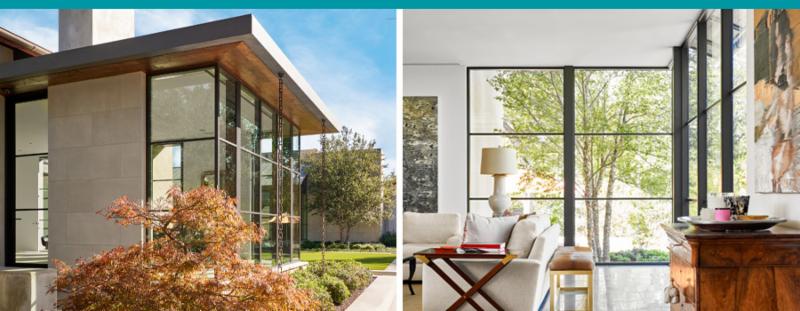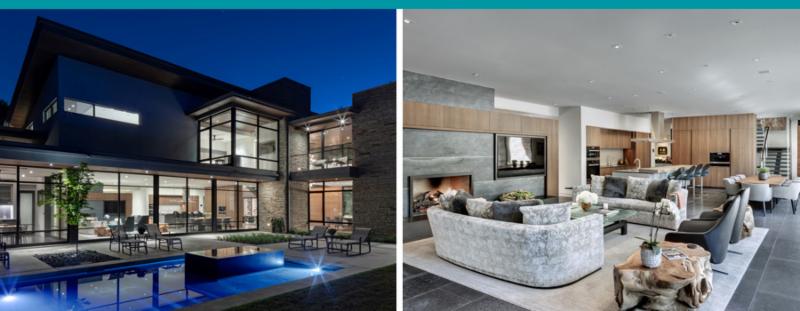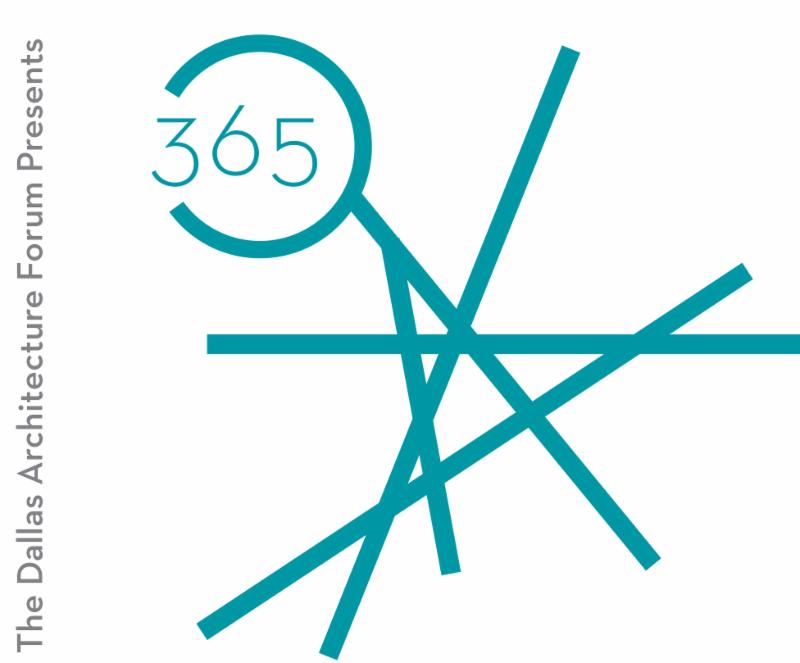The Dallas Architecture Forum Presents
365 MODERN LIVING COCKTAIL PARTIES
Modern Living Every Day of the Year
Join The Dallas Architecture Forum for three great evenings at some of the most significant modern residences in Dallas.
Each evening will include a cocktail reception with hors d’oeuvres, and the chance to see the residence and hear from some members of the design team while enjoying the company of fellow design enthusiasts.
Each cocktail party will be from 6 to 8 pm with remarks by the design teams at approximately 6:45 pm.
Valet parking, business or cocktail attire suggested for receptions.
Addresses and other information will be send to confirmed attendees once tickets have been purchased.
Limited attendance, you are encouraged to purchase your tickets NOW
Payment may also be made by check. Mail check, payable to
“Dallas Architecture Forum”, to PO Box 596119, Dallas, TX 75359.
We hope you will attend these wonderful evenings!

Tuesday, 21 May 2019, 6 to 8 pm
BRIDGE HOLLOW RESIDENCE
1
The Bridge Hollow Residence pays homage to both the early Texas modern architecture of David R. Williams, O’Neil Ford, and Frank Welch and the classical Texas architecture of John Staub. The Texas Modernism of large overhangs, standing seam metal roof, steel windows and Texas Antique Lueders Limestone combine with the gracious and glamorous living of Texas Classicism like the Camp House at the Dallas Arboretum. All combine to create strong connections in this house’s courtyard plan, between the inner and outer living spaces directed towards the Texas sunset. The 9,000 square foot house has the appearance of a one-story house. Nearly a quarter of the living area surrounds a sub-terranean motor court. Trees lining the front of the property provide a hint of seclusion while leaving the architecture visible and welcoming beyond. The ground level upon approach reveals the rear courtyard with a see-through entry and front living room. On either side of the courtyard are the dining space and library both overlooking the neighborhood with the more private spaces placed toward the back of the structure. The outdoor loggia serves as the connection point between all the family living areas while the entry court welcomes guests with its reflecting pool surrounded by more public spaces. The front water feature provides not only a visual, but an auditory sense of calm and peace. The smooth mirrored water on the surface provides a reflection of the sky and surrounding environment.
Crisp geometric forms define the courts, terraces and water features and are countered and softened with textural plantings. The material palette of the home and the landscape is elegant and spare: Leuders limestone, stucco walls, water, metal, glass, IPE wood, gravel and light. The materials bring a clean uniformity so that the landscape gestures compliment and support the architecture and tie the two together seamlessly. The rear garden is terraced down to the infinity, zero edge pool. A linear fire feature and modern trellis provide a year round sitting space close to the master bedroom. Wood ceilings are throughout the house, and flow from the interiors to the outdoor spaces. Ceramic tile which mimics concrete is the flooring throughout and it works beautifully with interior and exterior concrete elements of the structure. Beautiful Italian modern furnishings blend with an excellent art collection in the home. The master suite features bespoke walnut lacquered cabinetry and leather paneled walls. The library features stunning orange lacquer walls which create a dramatic contrast to the otherwise understated decor of this elegant home.
Architecture
David Stocker, AIA – Design Architect; Philip Pitzer, – Project Architect
SHM Architects
Interior Design
Neil Stewart, Principal Designer; Ann Riedel, Associate Designer
Neil Stewart Designs
Landscape Architecture
Mary Ellen Cowan, ASLA
MESA
Contractor
John Sebastian
Sebastian Construction Group

Tuesday, 4 June 2019, 6 to 8 pm
CRESCENT RESIDENCE
q
Crescent Residence sits on a beautiful wooded site with rolling topography and mature trees and was designed in order to save these trees and topographic features. Conceived as three narrow, stone and wood buildings, connected by two double-height glass infill spaces (entry hall and kitchen), the house primarily serves to focus on the visual and physical connections between the occupied spaces and the site. The front entry is accessed by the property’s thoughtfully-designed stone-clad motor court, and a welcoming water feature creates a peaceful atmosphere while lessening any city noises beyond. Entering the house, a vintage mid-century modern chandelier welcomes guests in the vast hall. Beautiful views of the back yard welcome visitors at every turn through floor to ceiling glass walls. A muted pallet of interior finishes helps to blend the boundaries between interior and exterior spaces. Flooring of white oak planks and antique limestone extend the ground plane to the terraced lawn spaces at the front and rear, providing transition from home to preserved mature oaks. Clay plaster and bleached white oak paneling are utilized at various wall and ceiling surfaces to expand the visual field across both levels of the house.
Every room has vistas through the mature trees, with direct physical access to the outside. Deep, zinc paneled roof overhangs shelter a series of exterior porches and balconies. A fire pit and seating area in the back yard provide entertainment close to the home while a path of Pennsylvania bluestone slabs ascend toward a sunken fire pit and carport at the rear. The remarkably verdant qualities of the landscape, comfortable furniture, bespoke rugs and fittings, and cherished art throughout the home all help to define this comfortable and comforting home. A neutral pallet of exterior materials, including bevel shell stone, stained wood, and weathered zinc, helps integrate the home to the larger site, while bringing into focus the trees and their changing seasonal color, texture, and dappled light of this site reconnected to the adjacent branch of Turtle Creek.
Architecture
Gary Cunningham, FAIA; Michael Bessner, Assoc. AIA;
Tom Dohearty, AIA; Sharon Odom, AIA
Cunningham Architects
Interior Design
Shannon Bowers, RID; Marci Thomas, RID
Shannon Bowers Design
Landscape Architecture
David Hocker, FASLA; Ashlee Lehmann, ASLA
Hocker Design Group
General Contractors
Steve McCombs; Vaughn Shadle
S.H. McCombs Company, Inc.
George Bramblett
Webster Street, Inc.

Thursday, 13 June 2019, 6 to 8 pm
WILDWOOD RESIDENCE
1
The Wildwood Residence brings the outdoors in as it sits nestled in a heavily forested area of Bluffview. The house has large sliding glass doors that connect to the pool deck area to the east, creating an expansive feel. A large sliding glass pocket door extends the kitchen / family room space to the screened porch, continuing the indoor / indoor connection. The Eggersman kitchen anchors this expansive living area, finished in walnut and stainless steel. This entire living space (family room, kitchen and porch) has Mediterranean Blue limestone floors which seamlessly flow from the interior to the exterior living area. The screened porch has a full outdoor kitchen, pizza oven, fireplace, grille and dining area with granite countertops throughout. The house’s dramatic entry, which is partitioned from the sitting area by an art glass stair wall, features a custom Tibetan area rug and 11′ tall iridescent chandelier. The sitting area beyond includes a bar and wine display wall and exotic iron red granite. The study, adjacent to the dining area, features leather floors. The house’s exterior materials allow the house to blend in organically in relationship to the heavily wooded lot. The stone veneer is a dry stacked chopped stone that complements the smooth gray stucco and Ipe wood siding.
The home’s site showcases mature trees and the soothing sounds of nature. Special attention to the site’s layout preserved existing trees by curving the vehicular approach from the center to side of the lot toward a coordinated wood gate the conceals the side-facing garage and entry to the home. Once inside the house, a floor-to-ceiling view to the reflective, dark pool in the rear yard reveals shadows of the surrounding Japanese maples and other trees emerging from the pool’s deck. A monolithic, rectangular granite block serves as a focal point and water feature in the pool’s shallow shelf. The dense shading of the site required a carefully selected plant palette of shade tolerant specimens. This is a home that clearly reflects the meaning of its name.
Architecture
Patricia Magadini AIA Design Architect; Bruce Bernbaum AIA and
Dan Typaldos AIA Project Architects
Bernbaum/Magadini Architects
Interior Design
Rick Rozas
Rick Rozas, Designer
Landscape Architecture
David Hocker, ASLA
Hocker Design Group

